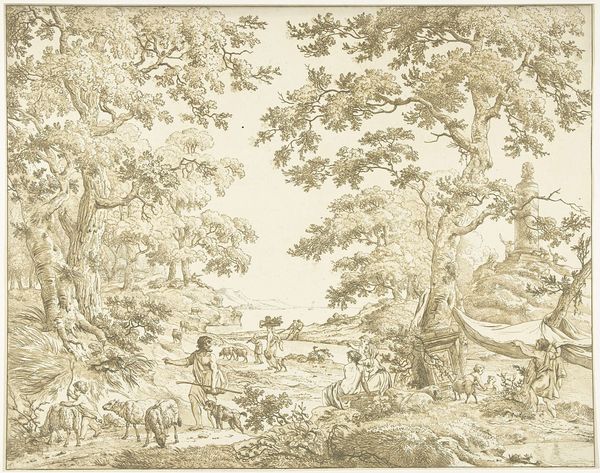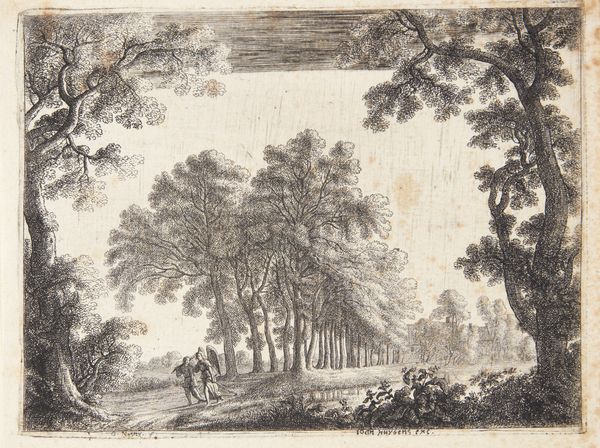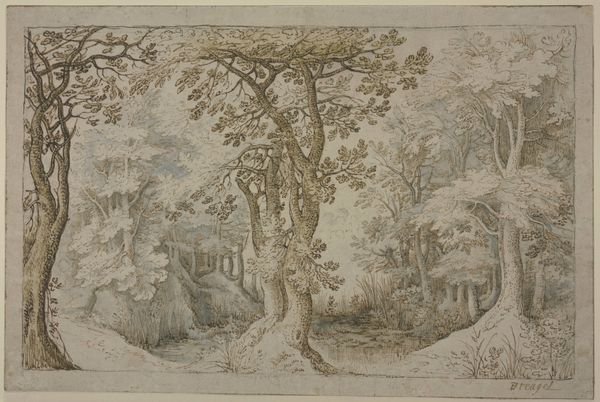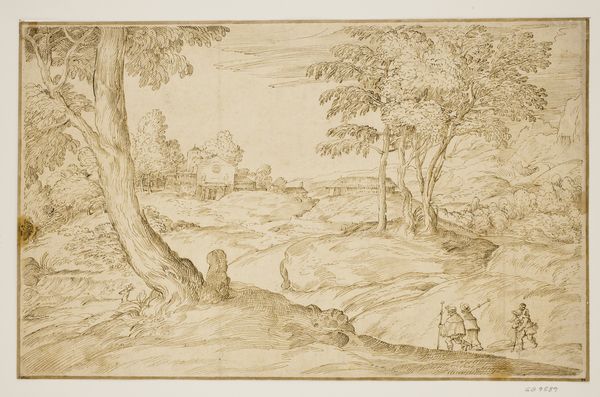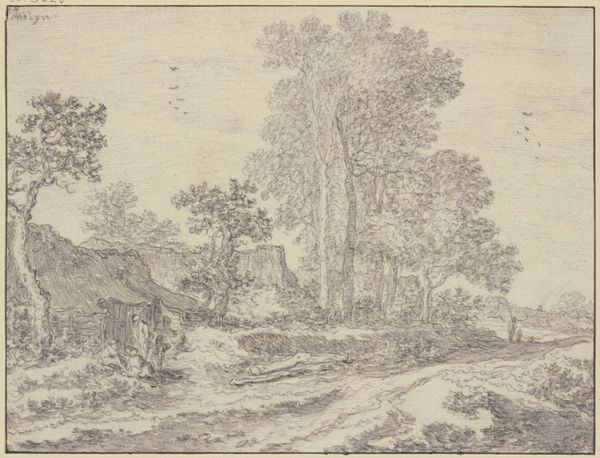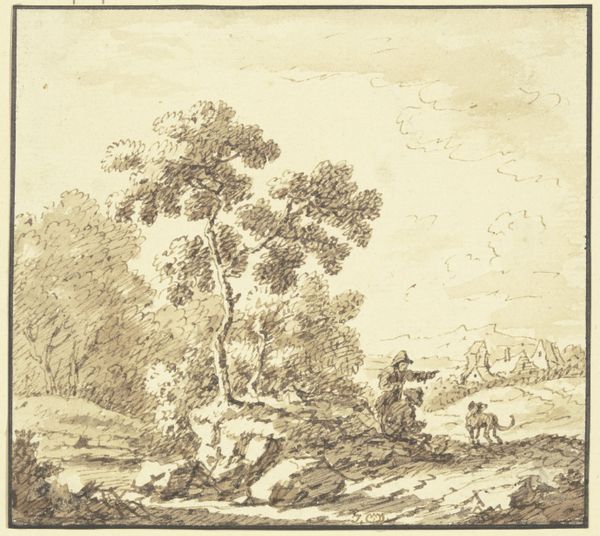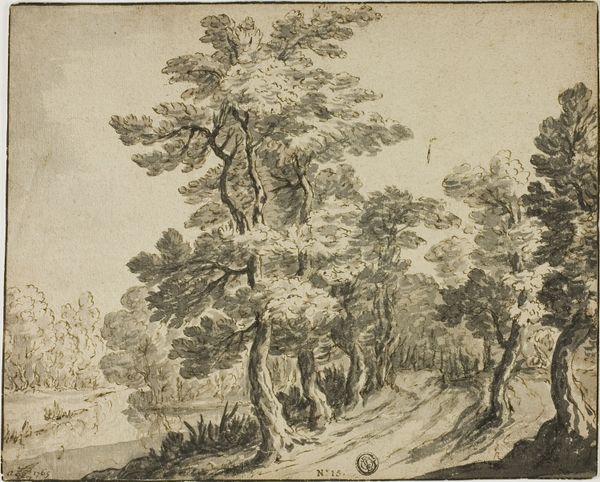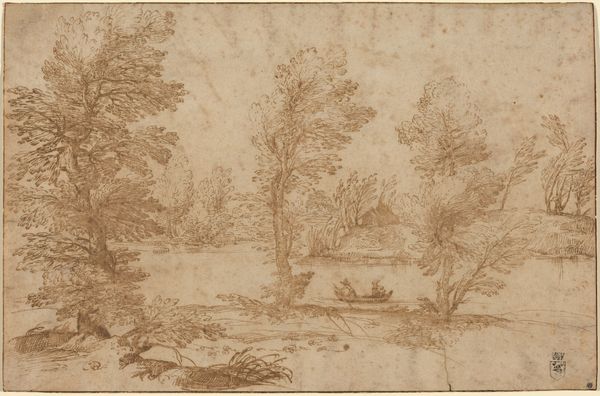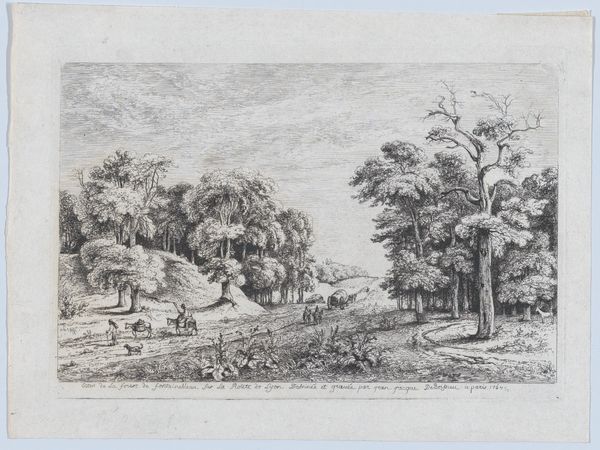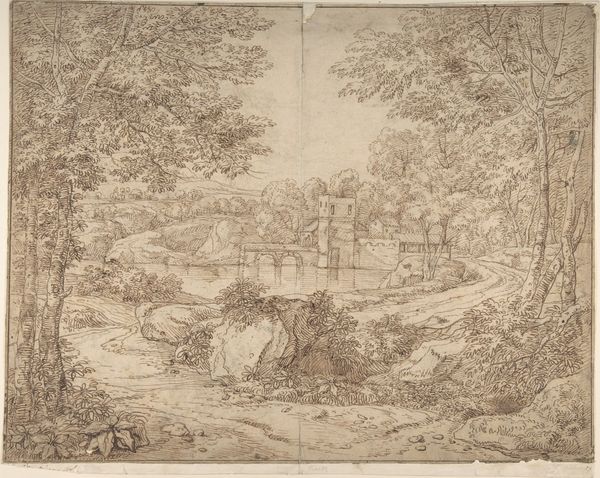
drawing, print, ink
#
drawing
#
ink drawing
# print
#
pen sketch
#
landscape
#
ink
#
northern-renaissance
Dimensions: Overall: 5 5/16 x 8 1/4 in. (13.5 x 21 cm)
Copyright: Public Domain
Curator: Welcome. Let's consider this intriguing ink drawing titled "Landscape," created by Isaak Major sometime between 1590 and 1636. It is currently held at The Metropolitan Museum of Art. What are your initial thoughts? Editor: It has a quiet, almost melancholic feel. The monochrome palette and delicate linework give it a sense of distance, a world seen through a veil. Curator: Indeed. This drawing offers insight into the landscapes and aesthetic sensibilities circulating among Northern Renaissance artists at the time. The level of detail for what seems like a pen sketch! Note that landscape was increasingly used to signify specific political dominion as claims to ownership played out across visual representation. Editor: Focusing on those details, there’s a fascinating interplay between the solid, almost architectural forms of the rock face and the ephemeral quality of the foliage. The composition leads the eye towards what looks like a classical ruin in the distance. Curator: It’s interesting that you should pinpoint what appears to be an abandoned structure at the top of the rocky surface. This is telling considering what was occurring socio-politically at the time as it could be perceived as decay. Landscape during this time became intertwined with narratives of exploration, conquest, and power dynamics. Editor: Yes, I notice that the artist's use of hatching and cross-hatching defines shapes, light, and shadow effectively, enhancing the drawing’s depth and complexity. It is a small drawing, which to me feels very intimate and immediate. Curator: What is really quite thought provoking about the work is, the landscape tradition during the period of its origin served not only as artistic exploration but also reflected shifting societal values, like land and property ownership. I appreciate that this piece remains a window into a pivotal point in the history of landscape art. Editor: I agree. Examining the relationships between texture, light and form helps us understand not only the technical skill demonstrated here, but also Major’s perception of the world, capturing this intersection between humanity and nature so distinctly in monochrome. Curator: Precisely. The way it was constructed and ultimately received contributes to understanding its role in our shared visual heritage. Editor: Thank you, a refreshing look at how line work can also speak volumes.
Comments
No comments
Be the first to comment and join the conversation on the ultimate creative platform.

